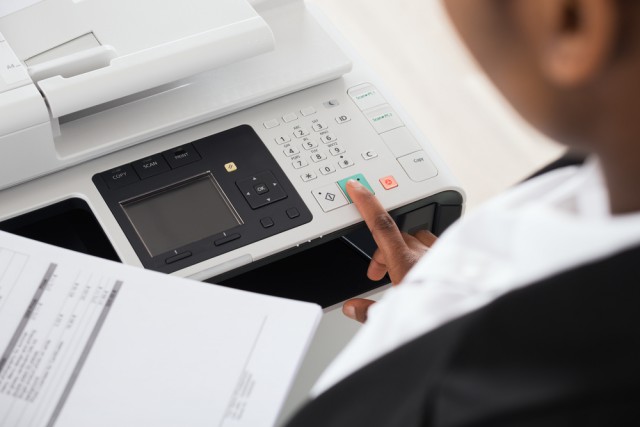Dispelling 5 common myths about desktop printers in the office

They may seem like technology from the days of old, but make no mistake -- desktop printers still can hold an important place in British businesses today. Not only do they help create efficient and flexible printing management, but they also can help keep British office workers at their most productive, rendering them potentially one of the most important products for IT managers in 2016.
The value of desktop printers is often overlooked due to advancements of new printer technology services, including an array of enterprise-orientated features, however, the traditional role of the printer mustn’t be forgotten. Desktop printers intertwined within a multi-device print and document management strategy, whilst also combining bigger multi-function devices with smaller devices, should arguably become commonplace for all managers responsible for their company’s printing activities.
So, let’s debunk some of the common myths around the limitations of desktop printers:
1. The Functionality I Want Only Comes with Large Departmental Machines
Although understandable given the "bigger is better: argument, this is simply no longer the case. Desktop printers of the highest standard can take on several printing jobs simultaneously, and print, copy and scan more speedily than ever.
Furthermore, such printers can provide the opportunity to scan to email, folder, and PC, do OCR (optical character recognition), offer web browsing and security options, in the same way as any larger, multi-functional printer. Wi-Fi connectivity, Postscript support, ARDF (automatic reverse document feeder) are also useful extras in some models today.
2. Nowadays We Cannot Do Without Multi-Functional Devices in the Office
This may be the case in larger organizations with many departments where the volume of documents to be printed is key. However, for most, particularly smaller business, this needn’t be the case.
3. There Is Less Accountability in the Way Desktop Printers Are Used
Another myth to debunk here. Desktop printers these days come with all the device management features that come with large multi-function ones. These devices mean administrators can set up printer/copy/fax functions, troubleshoot, set up user codes, establish a mono or economy color set up, and monitor the army of devices wherever they may be.
4. I Will Always Be Ordering Office Supplies, and Employees Can Lose Time Fiddling with Desktop Printers Instead of Allowing a Central Office Printer to be Quickly Fixed by Technicians
We use desktop printers for different tasks so this is not always the case. While carrying out a print audit, more often than not the annual print volume in such parts of a business is actually rather low, and if your desktop printers are part of a mix of devices, when managed by a managed document solution provider, the procedure designed to order supplies is easy and effective.
Toners will be provided only when necessary and there will be quick access to engineering and technical support.
5. Desktop Printers Are Not as Secure
Printer security varies from vendor to vendor. Data protection, network protection, and user authentication features to make printing even more secure, do come inbuilt with many printers today.
The desktop printer is certainly not a redundant, old clunky piece of technology. Managed correctly and with robust security, strong device management features and Wi-Fi connectivity, desktop printers can seamlessly integrate with modern businesses today.
IT managers should continually look for ways to innovate a company’s printing activities to keep the workforce as productive as possible.
Steven Hastings, IT sales director at Ricoh.
Published under license from ITProPortal.com, a Future plc Publication. All rights reserved.
Photo Credit: Andrey_Popov/Shutterstock
